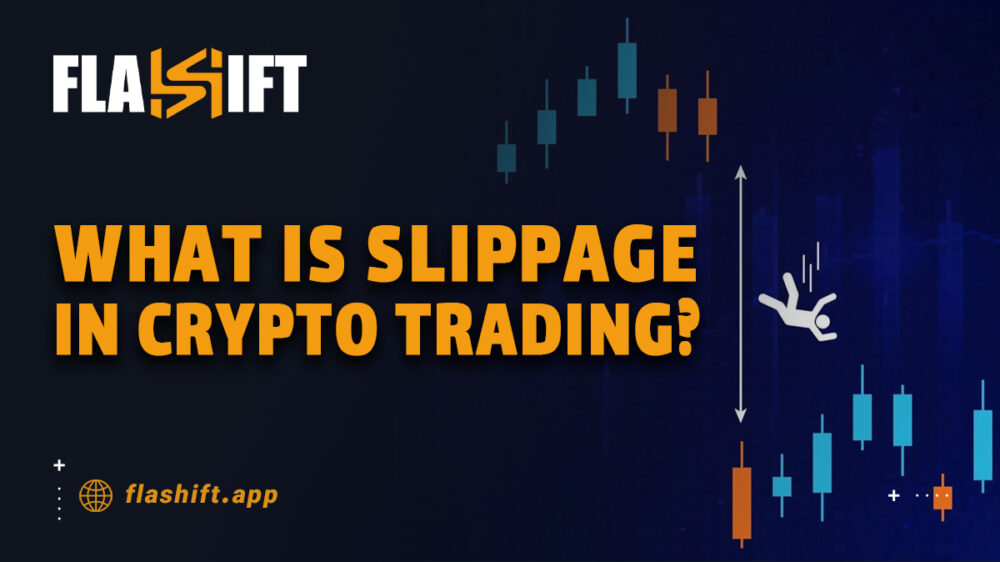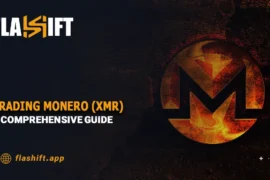What is Slippage in Crypto Trading? | Slippage in crypto, is a cryptocurrency trading term that refers to the situation that occurs when your order price is different than your execution price. Slippage may very well be an annoying part of trading digital currencies, but slippage can change the specifics of a trade, especially in a fast-moving market.
Instead of thinking about slippage as a cost to trading, traders can use strategies to mitigate slippage in the first place. In this article, we are going to help you understand why slippage occurs, as well as the importance of understanding slippage in order to prevent it and give you a better controlled experience around your trades.
What is Slippage in Crypto Trading?
Crypto slippage refers to the difference between the expected price of a trade and the prevailing market price at which it is settled. Such variation arises from sharp price fluctuations in the duration within which an order is placed to the time when the order will be matched. Slippage can be either positive (where the buyer is given a better price than they expected) or negative (where the order is settled at a worse price).
Types of Slippages in Crypto
- Positive Slippage: Occurs when an order is executed at a more favorable price than anticipated. For example, if a trader places a buy order at $50,000 per Bitcoin but the order is filled at $49,800, the trader benefits from a lower price.
- Negative Slippage: Happens when an order is executed at a worse price than expected. For instance, if a trader places a sell order at $2,500 for Ethereum but it is filled at $2,480, the trader receives less than anticipated.
What Causes Slippage in Crypto Transactions?
Crypto slippage is most often a result of market volatility and illiquidity. The prices of cryptocurrencies may change within milliseconds due to large buy or sell orders, unexpected news announcements, or simple shifts in overall market sentiment. If an order is placed by a trader, the price could move before the execution of the order, and that results in the expected execution price differing from the actual execution price. The more liquid, and quick the market is, the higher the chances slippage will occur (especially for large trades that require multiple price levels to be settled).
Another reason for slippage is the liquidity of a particular cryptocurrency or trading pair. In low-volume markets, there may not be enough buy or sell orders at a particular price level, and hence the trade will be done at the next best available price. This is especially common in less popular or newly issued tokens with fewer market makers. Even in extremely liquid markets, slippage will certainly occur if an order is substantially greater than available order book depth, leaving traders to accept prices far removed from their initial hopes.
Read More: 5 Important Tips to Exchange Crypto
How to Minimize Slippage in Crypto Trading
To reduce the impact of slippage, traders can adopt the following strategies:
- Use Limit Orders: Unlike market orders, which execute immediately at the best available price, limit orders only execute at a set price or better. This prevents unexpected price deviations.
- Set Slippage Tolerance: Many trading platforms allow users to set a maximum acceptable slippage percentage. This helps control the extent to which price variations affect trade execution.
- Trade During High Liquidity Periods: Trading when markets have higher liquidity—such as during peak trading hours—can reduce slippage since more buy and sell orders are available at different price levels.
- Choose Exchanges with Deep Order Books – Platforms with high trading volumes and deep liquidity pools tend to have less slippage, as there are enough buyers and sellers to accommodate large trades without significant price shifts.
Slippage is an unavoidable aspect of crypto trading, but by understanding its causes and applying effective strategies, traders can manage it better and minimize unnecessary losses.
Best Crypto Exchanges with Low Slippage Rates

Choosing a crypto exchange with deep liquidity and efficient order execution can significantly reduce slippage. High liquidity ensures that there are enough buy and sell orders to fill trades at expected prices, while advanced trading infrastructure helps execute orders quickly. Here are five of the best crypto exchanges known for their low slippage rates:
1. Binance
Binance is the world’s largest crypto exchange by trading volume, offering deep liquidity across hundreds of trading pairs. Its high-frequency trading infrastructure and large user base help minimize slippage, making it ideal for both retail and institutional traders. The exchange also provides advanced order types and slippage tolerance settings for precise trade execution.
2. Coinbase Pro
Coinbase Pro is known for its robust order book and institutional-grade liquidity, especially for major cryptocurrencies like Bitcoin and Ethereum. The platform’s advanced trading features, including limit and stop orders, help traders mitigate slippage. While fees can be higher than other exchanges, its reliability and strong regulatory compliance make it a preferred choice for serious traders.
3. Kraken
Kraken is a mature exchange with deep liquidity and very little slippage for both spot and futures trading. It has wide fiat-to-crypto pair coverage, making it an excellent option for traders who need to enter or exit trades with extremely minimal price deviation. Kraken’s advanced trading features, such as dark pools and futures contracts, also minimize slippage effectively.
4. Bybit
Bybit is the exchange focused on derivatives in the form of futures and perpetual contracts. It is particularly attractive to large traders who issue orders due to its highly liquid order books that ensure minimal price slippage. Bybit also offers features of slippage protection such as limit order execution as well as customizable slippage tolerance settings.
5. OKX
OKX is a global exchange that offers both spot and derivatives trading with high liquidity. It boasts a sophisticated matching engine that makes trades quickly, reducing execution slippage and latency. OKX is extensively utilized by high-frequency and algorithmic traders who desire trading with low costs and low slippages.
These exchanges provide decent liquidity and advanced trading tools to minimize slippage and to close trades at more stable prices. When choosing an exchange, consider volume of trade, order execution speed, and number of trading pairs supported in order to have a best-of-breed trading experience.
Tips for Choosing the Best Crypto Exchange with Low Slippage
| Factor | Why It Matters | What to Look For |
| Liquidity | Higher liquidity reduces price fluctuations and slippage. | Check 24-hour trading volume and order book depth. |
| Trading Pairs | More pairs with deep liquidity provide better execution options. | Ensure the exchange supports your preferred trading pairs. |
| Order Types | Advanced order options help control trade execution and price impact. | Look for limit orders, stop-loss, and slippage tolerance settings. |
| Fee Structure | High trading fees can eat into profits, especially for frequent traders. | Compare maker and taker fees, and check for discounts on high-volume trades. |
| Trading Speed | Faster order execution prevents price changes before trades complete. | Choose exchanges with high-performance trading engines. |
| Security & Reliability | Strong security measures ensure fund safety and uninterrupted trading. | Check for regulatory compliance, insurance, and past security incidents. |
Can You Get the Best Rates and Low Crypto Slippage at the Same Time?
It can be difficult to find an exchange that provides the most competitive rates and minimal slippage since deep liquidity and competitive pricing aren’t necessarily on the same page. Low-slippage traditional exchanges tend to have fixed trading fees, while exchange platforms that provide the best rates are prone to having issues with liquidity, which results in higher slippage. Aggregator platforms are making this all work together by taking liquidity from various exchanges and providing the best possible trade execution.

A good example is Flashift.app, a non-custodial crypto exchange aggregator that looks across several liquidity providers for the best rates with less slippage. Compared to single-exchange trading, Flashift makes dynamic choices about the best price across different platforms of trading, minimizing the effect of order book depth constraints. With this method, traders receive the best possible prices while being efficient in trade execution.
By utilizing intelligent routing technology, Flashift.app minimizes slippage by spreading big orders among several exchanges or pools of liquidity in order to achieve a more balanced execution. That way, it is ideal for traders who wish to optimize both price and execution without relying on one exchange order book.
Swap BTC to USDT-TRC20 right now!
FAQ
1. Is slippage always bad for traders?
Not necessarily. While negative slippage results in a worse execution price, positive slippage can sometimes work in a trader’s favor by securing a better price than expected.
2. Why do some exchanges have more slippage than others?
Slippage depends on liquidity, order book depth, and execution speed. Exchanges with lower trading volume or fewer market participants tend to have higher slippage.
3. Can slippage affect both small and large trades?
Yes, but large trades are more vulnerable. A large order may consume multiple price levels in the order book, leading to greater slippage, while small trades may experience minor or negligible slippage.
4. Does slippage happen only in spot trading?
No. Slippage can occur in spot, futures, and even decentralized exchange (DEX) trades, especially when liquidity is low or price movements are rapid.
5. Can I fully eliminate slippage?
No, but you can minimize it by using limit orders, trading on high-liquidity platforms, and setting slippage tolerance settings where available.







